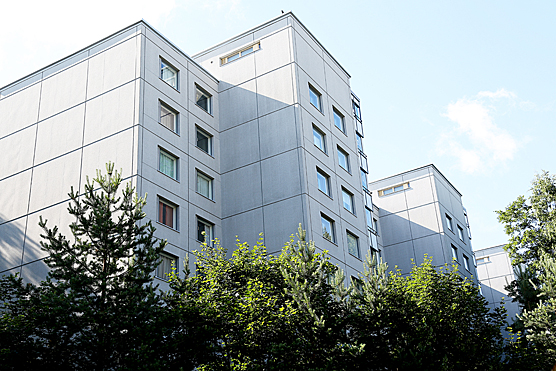
© Helsinki City Housing Company (Heka)
There are only a few practical experiences of using carbon footprint calculations, energy optimisation and circular economy solutions in the building renovations. The City of Helsinki mapped and tested various options that take the climate and circular economy objectives into account in a renovation project, which aimed to increase awareness of low-emission and resource-wise reconstruction at city level. The residential buildings, build at the turn of the 1970s, of the project are located in the eastern part of Helsinki, Kontula.
Already at the project planning stage, important decisions are made in terms of emissions, which affect the project’s start, the options reviewed and the construction costs regarding updates to the energy solutions, for example. For this reason, new objectives in particular need to be taken into account as early as possible.
The renovation project of Kontulankaari 11, a rental housing location owned by the housing company Helsingin kaupungin asunnot Oy (Heka), succeeded in linking climate and circular economy objectives to the project planning and, consequently, to the actual planning process. In this way, concrete actions that meet the objectives can also be taken to the implementation of the renovation.
The lessons learned and experiences from this project will also be utilized in future renovations of residential buildings. Good practices and challenges are also examined in the city's development work, such as Heka's ongoing HELENA project and the operations of the circular economy cluster, which was launched in summer 2021.
“During the early stages, we are focusing on promoting the circular economy of construction and support concrete actions that promote the industry. The Kontulankaari project gave us a lot of information about what kind of challenges we have to solve together. We welcome all actors that are interested in promoting the circular economy of construction to participate in the cluster's activities! ”, says Mira Jarkko, project manager of the Helsinki Circular Economy Cluster Program.
Energy optimization in the project planning phase supports the low-carbon implementation
When it comes to reducing the heating energy consumption of the existing buildings, energy efficiency renovations are not only a significant emissions reduction measure, but also a cost-effective one in the long run. The renovation of Kontulankaari 11 sought the most cost-effective solution that would significantly improve the site's energy efficiency and reduce its life cycle carbon footprint. During the project planning, energy optimisation was conducted using the MOBO Multi-Objective Building performance Optimization tool and lifecycle carbon footprint calculation in accordance with the Ministry of the Environment's method for the whole life carbon assessment of buildings.
The goal is that after the renovation work, the buildings’ energy efficiency will increase by at least 32% from the original construction stage to the status after the renovations. Based on the energy optimisation, turning the ventilation system into a supply/exhaust air system combined with a district heating and geothermal system was selected as the most cost-efficient solution to direct the project plan. A well-timed energy optimisation helps to yield significant emissions savings, and the solution recommended for this project would achieve a carbon footprint that is 1,620 t CO2e lower than the current footprint.
There was also a desire to promote the circular economy. In the planning phase a reuse review and plan, that is a light predemolition audit, and project works by students from Metropolia University of Applied Sciences regarding the reuse of kitchen fixtures and balcony glazing, in cooperation with the HYPPY project were conducted. Based on the reuse review, the refrigerator-freezers are directed to reuse in cooperation with the Reuse Centre. As for the balcony glazing, it is required that the contractor deliver it for material recycling. The LECA can probably be used in earthworks. In addition to these, the aim is to use eco-labelled (such as the Nordic swan eco-label) products in the renovations, as far as the total budget allows.
Read more